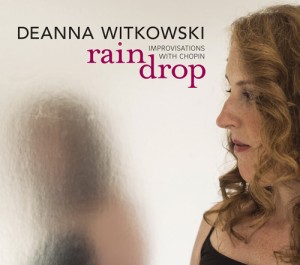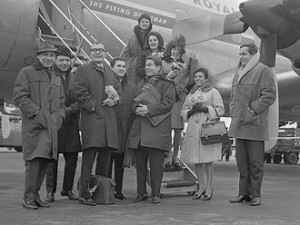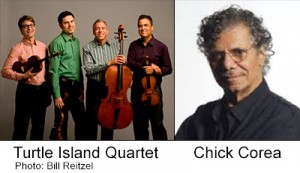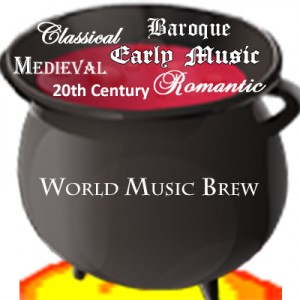There are still some quarters on this planet where musicians, musicologists, and critics perceive the world of music in terms of categories: classical music here, jazz over there, world music in other places. In fact, pick up any music history book and the world of music is neatly divided among early music, medieval music, Baroque, classical, Romantic, and then 20th century music.
This latter category is a potpourri of musical styles, and extends into the early part of the 21st century.
I am still waiting for more musicologists to come to terms with the term “world music” to define the 21st century because that is what music has increasingly become: a melding of musical styles with influences from all over the planet.
I am motivated to delve into this subject primarily for two reasons. First, later this week I’ll be hosting the fall concert of the Milt Hinton Jazz Perspectives Concert Series at Baruch College’s Engelman Recital Hall (on October 29). The performers are the Grammy-nominated Harlem Quartet. In addition to one purely classical piece (a movement from a Mendelsohn string quartet), the balance of their program will be all jazz.
 The second reason is a new CD from pianist Deanna Witkowski entitled “Rain Drop.” It is her sensitive and tasteful adaptation of several Chopin nocturnes and preludes sprinkled with her own short compositions inspired by the Romantic composer. The melding of the two genres—classical and jazz—is ever-present in this inspired CD. For example, Ms. Witkowski makes the musical point that Chopin’s Prelude in E minor (op. 28, No. 4) is also the basis for Antonio Carlos Jobin’s “Insensatez.”
The second reason is a new CD from pianist Deanna Witkowski entitled “Rain Drop.” It is her sensitive and tasteful adaptation of several Chopin nocturnes and preludes sprinkled with her own short compositions inspired by the Romantic composer. The melding of the two genres—classical and jazz—is ever-present in this inspired CD. For example, Ms. Witkowski makes the musical point that Chopin’s Prelude in E minor (op. 28, No. 4) is also the basis for Antonio Carlos Jobin’s “Insensatez.”
This melding of classical and jazz genres (and in the case of Jobin, Brazilian rhythms) is not a recent happening, particularly when it comes to jazz-influenced classical compositions. Almost from the initial emergence of jazz as America’s classical music (a term the late Dr. Billy Taylor coined; and don’t let anyone tell you any differently), classical composers have mined the jazz genre. For example, parts of the Czech composer Antonin Dvorak’s Symphony No. 9 in E minor (written in the 1890s) have melodies that sound like black spirituals (although he claimed he did not plan the resemblance).
There are other notable classical composers who have borrowed from the jazz genre for their compositions:
- George Antheil (A Jazz Symphony)
- Malcolm Arnold (Concerto for Guitar and Orchestra)
- Milton Babbitt (All Set)
- Leonard Bernstein (Prelude, Fugue, and Riffs)
- Boris Blacher (Concerto for Jazz Orchestra)
- Marc Blitzstein (The Cradle Will Rock)
- Aaron Copland (Concerto for Piano and Orchestra)
- George Gershwin (most famously Rhapsody in Blue)
- Hans Werner Henze (Boulevard Solitude)
- Pail Hindemith (Suite fur Klavier)
- Arthur Honegger (Concerto for Cello and Orchestra)
- Constant Lambert (Elegiac Blues)
- Rolf Liebermann (Concerto for Jazzband and Symphony Orchestra)
- Frank Martin (Ballade for trombone and piano)
- Darius Milhaud (Trois rag caprices)
- Maurice Ravel (Piano Concerto in G)
- Gunther Schuller (Concertino for Jazz Quartet and Orchestra)
- John Serry (American Rhapsody)
- Dmitri Shostakovich (Suite for Jazz Orchestra);
- Karlheinz Stockhausen (Sonatine for violin and piano);
- Igor Stravinsky (Ragtime for 11 instruments)
- Michael Tippett (Symphony No. 3)
- Kurt Weill (The Threepenny Opera)
- Alec Wilder (Octets)
The mixing of classical and jazz in the 20th and 21st centuries has flowed the other way. The highly classically trained Andre Previn made several small ensemble albums of jazz and popular music standards. His classical roots are clearly imprinted on every track.
 The Swingle Singers, (pictured left) directed originally by Ward Swingle (who once belonged to Mimi Perrin’s French vocal group Les Double Six), began as session singers mainly doing background vocals for singers such as Charles Aznavour and Edith Piaf. Christiane Legrand, sister of Michel Legrand, was the original lead soprano, and they did some jazz vocals for Michel Legrand. The eight session singers sang through “Bach’s Well-Tempered Klavier” as a sight-reading exercise and found the music to have a natural swing. They recorded their first album “Jazz Sébastien Bach” as a present for friends and relatives. Many radio stations picked it up and this led to the group recording more albums and winning a total of five Grammy Awards.1
The Swingle Singers, (pictured left) directed originally by Ward Swingle (who once belonged to Mimi Perrin’s French vocal group Les Double Six), began as session singers mainly doing background vocals for singers such as Charles Aznavour and Edith Piaf. Christiane Legrand, sister of Michel Legrand, was the original lead soprano, and they did some jazz vocals for Michel Legrand. The eight session singers sang through “Bach’s Well-Tempered Klavier” as a sight-reading exercise and found the music to have a natural swing. They recorded their first album “Jazz Sébastien Bach” as a present for friends and relatives. Many radio stations picked it up and this led to the group recording more albums and winning a total of five Grammy Awards.1
You can hear the strong classical training roots in the playing of jazz pianist greats Oscar Peterson and Bill Evans. I recall Evans once telling me that when he was younger he studied the Romantic composers (he also apparently worked harder than anyone else to achieve his harmonically complex yet sensitive playing style, despite the fact that his hands were unusually large).
 Even more recently the two-time Grammy-winning Turtle Island Quartet —through the talents of founder David Balakrishnan–has adapted jazz stylings for violins, viola, and cello. Similarly, the aforementioned Harlem Quartet performs Chick Corea’s crossover (classical to jazz) compositions.
Even more recently the two-time Grammy-winning Turtle Island Quartet —through the talents of founder David Balakrishnan–has adapted jazz stylings for violins, viola, and cello. Similarly, the aforementioned Harlem Quartet performs Chick Corea’s crossover (classical to jazz) compositions.
On a more individual basis, virtuoso guitarist Romero Lubambo of Trio Da Paz fame is fond of performing Bach’s Prelude in C minor at the drop of a hat and at unbelievable breakneck speed (I have heard him perform it in the context of a Trio Da Paz performance and separately at a Diane Reeves concert). Very often jazz pianist Cyrus Chestnut will morph an improvisation into a familiar classical melody and back to various jazz stylings.
The larger concept, of course, is this trend–present throughout the 20th century—has evolved into a melding of world music styles in the 21st century. In other words, every musical and rhythmic style is now fair game for composition and performance. Influences come from all corners of the planet. It has become a melting pot of musical influences. My own quintet, The Heritage Ensemble, performs arrangements and original compositions that combine Hebraic melodies with various jazz, Afro-Caribbean, Brazilian, and, yes, classical styles.
There’s no getting around it: along with a global economy there’s also a global exchange of music styles. This is the new music of the 21st century.
If you have any comments or questions about this or any of my other blogs, please write to me at meiienterprises@aol.com.
Eugene Marlow, Ph.D.
October 27, 2014
© Eugene Marlow 2014
1 http://en.wikipedia.org/wiki/The_Swingle_Singers


